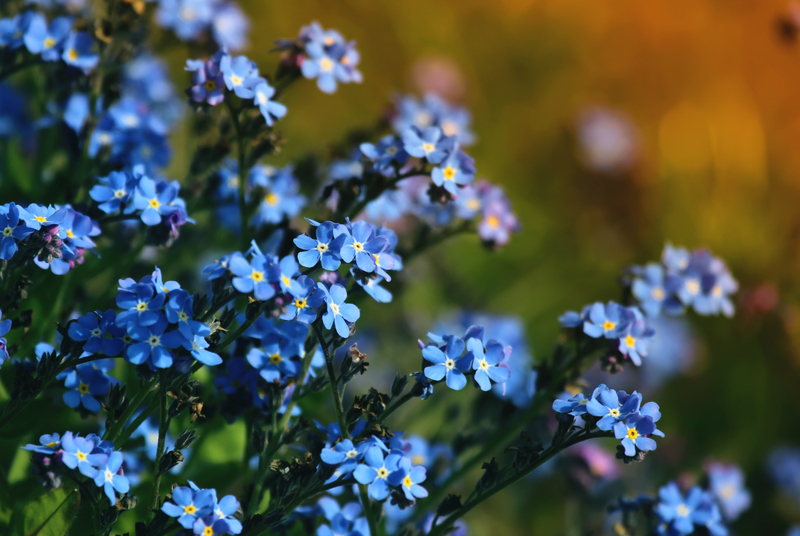Serenity Now: Designing a Calm Zen Garden Space
Posted on 26/08/2025
Serenity Now: Designing a Calm Zen Garden Space
Are you searching for tranquility in your home or yard? Channeling the calm essence of a Zen garden can bring peace, reflection, and natural beauty to any space. Zen gardens, originated in Japan, are renowned for their serene minimalism and meditative qualities. Whether you have a sprawling backyard or a compact urban terrace, you can invite *serenity now* by thoughtfully designing your very own Zen-inspired oasis.
What is a Zen Garden?
A Zen garden, also known as a karesansui or Japanese rock garden, is a dry landscape arrangement meant to evoke the peacefulness of nature without the use of water. These gardens use rocks, gravel, sand, and carefully chosen plants to create miniature stylized landscapes. Originally used for meditation by Buddhist monks, Zen gardens today are loved worldwide for embodying simplicity, balance, and *serenity*.
- Minimalist design: Focuses on open space and simplicity, with each element chosen for its symbolism and beauty.
- Natural elements: Emphasizes rocks, sand, gravel, moss, and select plant life.
- Meditative space: Encourages relaxation, mindfulness, and contemplation.

The Benefits of a Zen Garden at Home
Before we dive into the designing process, let's explore why you should consider creating a tranquil Zen garden space:
- Stress reduction: Engaging with a calm, harmonious environment can significantly lower anxiety and promote mental clarity.
- Enhanced mindfulness: The act of raking gravel, placing stones, or pruning plants can be meditative, fostering greater presence in the moment.
- Low maintenance: Unlike traditional gardens filled with flowers, a Zen garden requires minimal watering and pruning, making it a practical choice for busy people.
- Year-round beauty: The abstract and lush elements of a Zen-inspired space remain attractive in all seasons.
Core Principles of Zen Garden Design
Creating a serene Zen garden isn't just about arranging rocks and sand. Authentic Zen garden design is guided by centuries-old principles:
1. Asymmetry
Imperfection is celebrated in Zen philosophy. Avoid rigid symmetry; instead, create balance by placing elements in odd numbers and irregular patterns.
2. Simplicity
Less is more. Keep the *palette limited* and choose elements for their symbolic value and visual calmness, not abundance or variety.
3. Naturalness (Shizen)
Even in a constructed Zen space, the aim is to suggest the effortless beauty of nature. Arrange rocks, sand, and plants to feel organic and unforced.
4. Tranquility
Above all, your garden should radiate *serenity* and offer a sense of peace.
Elements of a Calm Zen Garden Space
Incorporating the classic elements of Zen gardens will help you achieve a soothing sanctuary.
Rocks and Stones
- Symbolism: Rocks are often the "bones" of a Zen landscape, representing mountains, islands, or animals, and grounding the space spiritually.
- Arrangement: Opt for odd numbers and asymmetry; avoid lining up rocks or placing them equidistantly. Half-bury stones for a natural, weathered look.
Gravel and Sand
- Raking patterns: Carefully rake sand or gravel in swirling or parallel lines to symbolize water ripples, enhancing the meditative aspect of the garden.
- Low-maintenance surface: Gravel beds replace lawns or flower beds, eliminating the need for mowing or watering.
Moss and Groundcovers
- Softness and texture: Mossy patches offer a rich, green contrast to gravel and stones, creating visual interest.
- Shade loving: Perfect beneath trees or in corners, moss thrives in moist, shady environments.
Carefully Chosen Plants
- Bamboo: Offers vertical lines and a gentle rustling sound in the breeze.
- Japanese maples: Provide seasonal interest with delicate leaves changing color in autumn.
- Evergreens: Such as pine or juniper maintain *serenity* year-round.
- Ferns and grasses: Add subtle movement and deepen the lush ambiance.
Water Features (Optional)
- While traditional dry Zen gardens do not use water, a small, quiet pond or fountain can add to the sense of tranquility, especially in larger garden spaces.
Step-by-Step Guide to Designing Your Zen Garden
Ready to design a calm Zen garden space? Follow these steps to transform your outdoor (or even indoor!) area into a haven of peace:
1. Choose Your Garden Location
- Size doesn't matter: Whether it's a narrow side yard, balcony, or full backyard, you can adapt Zen principles to any scale.
- Privacy: Pick a spot shielded from noise and neighbors, or use screens/plants to create a sense of enclosure.
2. Plan the Layout
- Draw a rough sketch: Outline where you'll place rocks, gravel areas, and any plants or features. Focus on creating negative space.
- Paths: Winding stone paths not only guide visitors but also symbolize life's journey.
3. Prepare the Ground
- Clear the site: Remove existing grass, weeds, and debris.
- Level and edge: Level the surface and install edging to keep gravel contained.
4. Place Large Elements First
- Install rocks: Begin with the largest stones, placing them off-center or in clusters, partially buried for a natural effect.
- Add boulders or statues: Carefully selected sculptures or simple lanterns add character without overwhelming the space.
5. Spread Gravel or Sand
- Lay a layer of landscape fabric to suppress weeds, then pour and rake gravel or sand smoothly over the area.
- Use a rake to create zen patterns that can be changed for variety or as part of meditation.
6. Choose and Plant Greenery
- Select drought-resistant, slow-growing plants for minimum maintenance.
- Arrange in small groups to maintain open space and balance.
7. Add Optional Features
- Water basin or fountain
- Stone lanterns
- Bamboo screens for privacy
8. Maintain Your Sanctuary
- Regular raking: Meditatively rake gravel or sand to refresh the surface and maintain serenity.
- Trim plants: Prune for shape and scale. Remove dead leaves or debris.
- Weed control: Pull weeds as soon as they appear to preserve the minimalist look.
Bringing Zen Indoors
Even if you lack outdoor space, you can nurture calm with a tabletop Zen garden or corner display. A simple tray filled with fine sand, a few stones, and a miniature rake offers a portable, meditative practice for your desk or living room, keeping serenity within reach all day.
Tips for Maintaining Peace and Order
- Declutter frequently: A true Zen retreat is free from clutter, emphasizing open space.
- Keep a neutral palette: Stick to greens, grays, soft browns, and natural stone colors for a calming effect.
- Use natural materials: Avoid plastics or brightly colored accessories that can disrupt the mood.
Incorporating Mindfulness and Meditation
Your garden should be more than just a visual treat--it can become a sanctuary for mindfulness and meditation.
- Walk or sit quietly: Use your garden for silent contemplation, deep breathing, or seated meditation.
- Garden as ritual: Tending the space--raking, trimming, rearranging--becomes a daily meditation.
- Invite others: Share the space with friends or family for group meditation, or keep it private as your personal oasis of serenity.
Common Mistakes to Avoid in Zen Garden Design
- Over-designing: It's easy to add too much. Stick to essentials, and let negative space have a presence.
- Bright, busy colors: Avoid flashy flowers or painted features. Subtlety is key.
- Unnatural symmetry: Nature rarely forms perfectly straight lines; let your arrangements feel organic.
- Neglecting symbolism: Each rock, plant, or piece of decor should have meaning and contribute to the sense of calm.

Ideas for Small Zen Spaces
- Balcony retreat: Use potted bamboo, a small gravel area, and a bench for a city escape.
- Corner Zen nook: In a small yard, dedicate one shady corner to moss, a stone lantern, and a gravel swirl.
- Indoor flex space: A sturdy tray garden on a coffee table or dresser for instant tranquility.
Conclusion: Serenity Now in Your Own Zen Garden
Designing a calm Zen garden space is a rewarding journey toward creating an environment of peace, reflection, and natural beauty. By incorporating classic elements--stones, sand, greenery--and adhering to time-honored design principles, you can cultivate serenity anywhere. Whether outdoors or indoors, a Zen-inspired garden offers a powerful antidote to the noise and stress of daily life. Serenity now isn't just a phrase: it's a way of living, grounded in mindful design, simplicity, and appreciation of the present moment.
So embrace the Zen philosophy--*design your own tranquil retreat*, and invite a permanent sense of calm and balance into your life.



